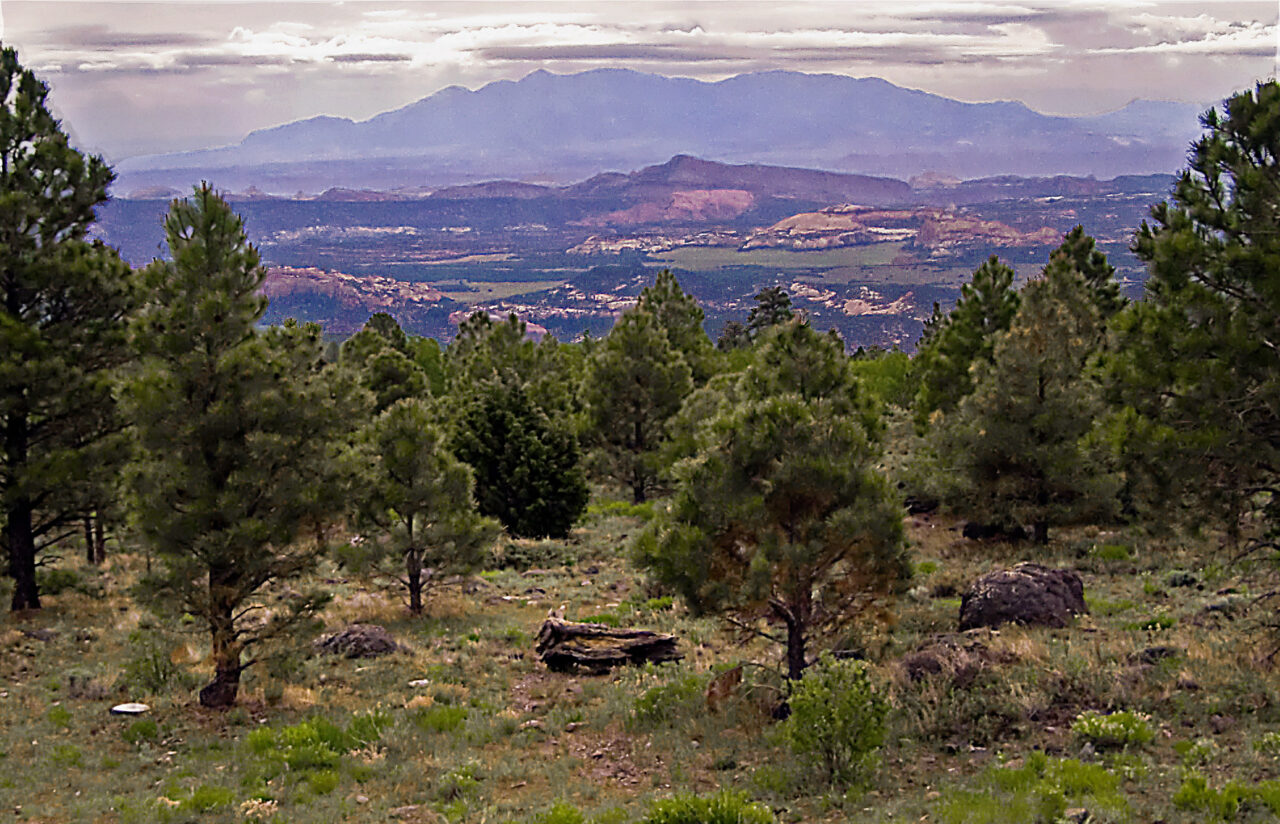Dixie National Forest: A Natural Wonderland
Where is Dixie National Forest located?
Dixie National Forest is nestled in the southwestern region of Utah, USA. The forest spans several counties, including Washington, Iron, and Beaver. The nearest towns include St. George, a vibrant city known for its warm climate and outdoor activities, and Cedar City, a gateway to numerous natural parks. The forest itself is a diverse ecosystem that offers stunning vistas, red rock formations, and a rich variety of flora and fauna, making it a popular destination for nature lovers and adventure seekers alike.
Get more Southwest News & Travel Tips Here
Get more Dixie National Forest Travel Tips & News here!
Best Time to Visit Dixie National Forest
The ideal time to visit Dixie National Forest varies depending on your preferred activities. Spring and fall are favored for their mild weather, with temperatures ranging from the mid-60s to mid-70s Fahrenheit. Summer can get quite hot, particularly in lower elevations, but it’s perfect for hiking and camping. However, be prepared for occasional thunderstorms. Winter offers a quieter experience, with opportunities for snowshoeing and cross-country skiing, but some areas may be inaccessible due to snow. Keep in mind that certain trails may close during peak seasons due to wildlife activity, so check local alerts before your visit.
How to get to Dixie National Forest?
Traveling to Dixie National Forest is convenient, thanks to its proximity to several airports. The closest major airport is St. George Regional Airport (SGU), located about 30 minutes away. For international travelers, McCarran International Airport (LAS) in Las Vegas, Nevada, is approximately a 2.5-hour drive from the forest. Additionally, Cedar City Regional Airport (CDC) offers regional flights and is about an hour’s drive from the forest, making it accessible for those coming from nearby states.
What to do when you arrive:
Upon arriving at Dixie National Forest, your first stop should be the visitor centers located in Cedar City and St. George. These centers provide valuable information on trails, maps, and current conditions. For accommodations, there are numerous options ranging from rustic campgrounds to hotels in nearby towns. If you prefer a more immersive experience, consider reserving a cabin within the forest or a vacation rental in the surrounding areas.
Getting Around Locally
Getting around Dixie National Forest is best done by car, as public transportation is limited. Several scenic byways run through the forest, allowing easy access to various attractions. If you plan to explore hiking trails or remote areas, a four-wheel-drive vehicle is advisable. Bicycling and hiking are also excellent ways to experience the forest up close.
Top Things to Do and See in the Dixie National Forest:
- Zion National Park: Just a short drive from Dixie National Forest, Zion is famous for its towering cliffs and stunning landscapes. The park offers numerous trails, ranging from easy walks to challenging hikes like the Angels Landing Trail.
- Cedar Breaks National Monument: Known for its stunning amphitheater filled with vibrant wildflowers and unique rock formations, Cedar Breaks is a paradise for photographers and hikers alike. The visitor center provides insights into the area’s geology and ecology.
- Red Cliffs Desert Reserve: This area features beautiful red sandstone formations and diverse wildlife. It’s perfect for hiking, with trails that lead to scenic vistas and unique geological features.
- Brian Head Ski Resort: In winter, Brian Head offers skiing and snowboarding opportunities. During summer, the area transforms into a mountain biking and hiking haven, with trails suitable for all skill levels.
- Fish Lake National Forest: Located a bit further from Dixie National Forest, Fish Lake is known for its fishing and boating activities. The surrounding areas offer excellent hiking trails and picnic spots with stunning lake views.
Suggested Itineraries
For a weekend getaway, consider the following itinerary:
- Day 1: Arrive and explore the visitor center. Spend the afternoon hiking the trails around Cedar Breaks National Monument.
- Day 2: Take a day trip to Zion National Park. Enjoy a full day of hiking and sightseeing, ensuring to visit the iconic Zion Canyon.
- Day 3: Relax and unwind at Red Cliffs Desert Reserve. Spend your final day enjoying the stunning desert scenery and perhaps a picnic before heading home.
Permits & Fees
While there are no fees to enter Dixie National Forest itself, some areas, such as Zion National Park, require entrance fees or permits for specific activities like backcountry hiking or camping. It’s important to check each area’s regulations in advance and obtain any necessary permits before your visit.
Nearby Day Trips & Detours
In addition to the attractions within Dixie National Forest, several nearby destinations are worth exploring:
- Antelope Canyon: Famous for its stunning slot canyon formations, this location offers guided tours that showcase its otherworldly beauty.
- Grand Canyon National Park: A longer day trip, but the breathtaking views and hiking opportunities make it a worthwhile detour.
- Las Vegas: For those looking to combine nature with entertainment, Las Vegas is a mere 2.5 hours away, offering a vibrant nightlife and dining scene.
Local Culture & History
Dixie National Forest is steeped in rich cultural history, originally inhabited by Native American tribes. The name “Dixie” itself is believed to have originated from a group of early Mormon settlers. The forest is not just a haven for outdoor enthusiasts; it also reflects the area’s heritage, as many historical sites and cultural landmarks are found within and around its borders. Engaging with the local culture through festivals and events can enhance your visit, providing deeper insights into the region’s history and community.
Where to Stay in Dixie National Forest
When planning your visit to Dixie National Forest, you have a variety of accommodation options that cater to different tastes and budgets. Here’s a list of some great places to stay:
- Hotels and Motels:
- SpringHill Suites by Marriott St. George – A modern hotel located near the attractions of St. George, offering spacious suites and complimentary breakfast.
- Hampton Inn & Suites St. George – Family-friendly accommodation with an outdoor pool and easy access to local attractions.
- Best Western Plus Abbey Inn – Known for its comfortable rooms and hearty breakfast, this hotel is a great base for your adventures.
- Campgrounds:
- Dixie National Forest Campgrounds – Various campgrounds within the forest offer a chance to immerse yourself in nature. Popular sites include the Pine Valley Campground and the Duck Creek Campground.
- St. George KOA – A well-equipped campground that provides amenities such as cabins, tent sites, and RV hookups.
- Unique Stays:
- Airbnb – Explore unique lodging options such as cabins, cottages, and even yurts in the surrounding areas. Check listings for local hosts offering a cozy stay.
- Glamping – Experience the outdoors without sacrificing comfort. Glamping options are available that offer a luxurious twist on camping, complete with amenities.
Dining Options
Dixie National Forest is not only a haven for outdoor enthusiasts, but it also offers a variety of dining options to satisfy every palate. Here’s a selection:
- Grab and Go:
- Cafe Sienna – A local favorite for breakfast and lunch, offering delicious sandwiches and salads perfect for a picnic in the forest.
- Family Friendly:
- Pizza Hut – A great place for families to enjoy a casual meal, offering pizza, pasta, and wings.
- Red Lobster – Known for its seafood, this restaurant provides a family-friendly atmosphere with a diverse menu.
- Upscale Dining:
- The Grille at Canyon Creek – An upscale dining experience with stunning views, offering a menu filled with local and seasonal ingredients.
- Fifth Street Grille – Known for its fine dining, this restaurant focuses on farm-to-table dishes and has an extensive wine list.
Travel Tips & Safety
When venturing into Dixie National Forest, it’s essential to stay safe and informed. Here are some resources and tips:
- Stay Hydrated: Always carry plenty of water, especially during summer hikes. A general rule is to drink at least 2 liters of water per day.
- Sun Protection: Apply sunscreen regularly, wear a wide-brimmed hat, and sunglasses to protect yourself from the sun.
- Wildlife Safety: Be cautious of wildlife. Keep a safe distance and never feed animals.
- Weather Alerts: Check local weather updates and alerts. For real-time weather updates, visit National Weather Service.
- Park Alerts: For updates on trail conditions or closures, visit National Park Service Alerts.
Packing List & What to Bring
To make your trip enjoyable, consider bringing the following items:
- Sturdy hiking boots
- Comfortable clothing suitable for varying weather
- Daypack for hikes
- First aid kit
- Flashlight or headlamp
- Insect repellent
- Snacks and a reusable water bottle
- Camera for capturing breathtaking views
Wildlife & Nature Highlights
Dixie National Forest is home to diverse wildlife and stunning natural features. Look out for:
- Deer: Mule deer are commonly seen grazing in the forest.
- Bird Watching: The forest is a birdwatcher’s paradise, with various species including eagles and hawks.
- Scenic Views: Don’t miss the breathtaking vistas at points like the Cedar Breaks Amphitheater and the surrounding red rock formations.
Accessibility Information
Dixie National Forest strives to be accessible for all visitors. Many trails and facilities are designed to accommodate individuals with mobility challenges. Check at visitor centers for information on accessible trails and facilities.
FAQs
Q: Are there entrance fees for Dixie National Forest?
A: No, there are no fees to enter Dixie National Forest. However, certain areas like Zion National Park do have entrance fees.
Q: Can I have a campfire in the forest?
A: Campfire regulations vary seasonally. Always check local fire restrictions before starting a fire.
Conclusion & Additional Resources
Dixie National Forest is a treasure trove of natural beauty and outdoor adventure. Whether you’re hiking through its stunning landscapes, camping under the stars, or enjoying the local cuisine, your visit will surely be memorable. For more information and resources, visit the official forest website and stay connected through social media for updates and tips.
Follow us on Facebook for the latest news, tips, and community stories: National Park Adventurers.


